Wingspan 36 m Manufacturer Comac | Start date 2 September 2009 | |
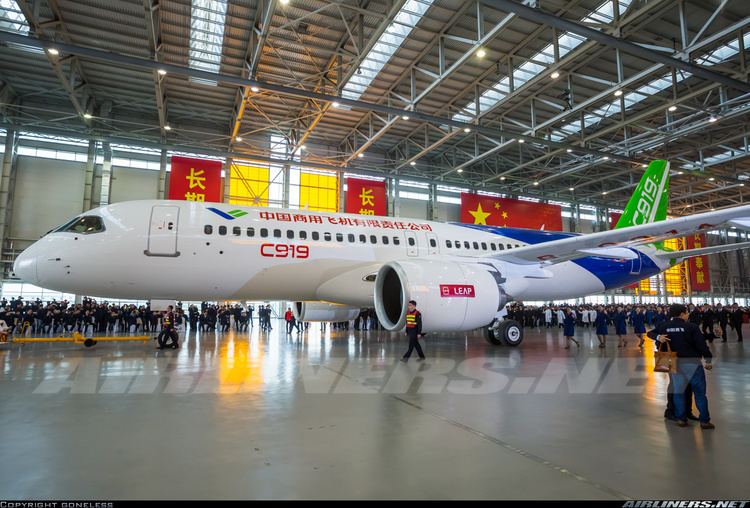 | ||
Comac c919 introducing video
The Comac C919 is a planned family of 158- to 174-seat narrow-body twin-engine jet airliners to be built by the Commercial Aircraft Corporation of China (Comac). It will be the largest commercial airliner designed and built in China since the defunct Shanghai Y-10. Its first flight is expected to take place in 2017, with first deliveries scheduled for late 2018. Roll-out ceremony was held in Shanghai on 2 November 2015.
Contents
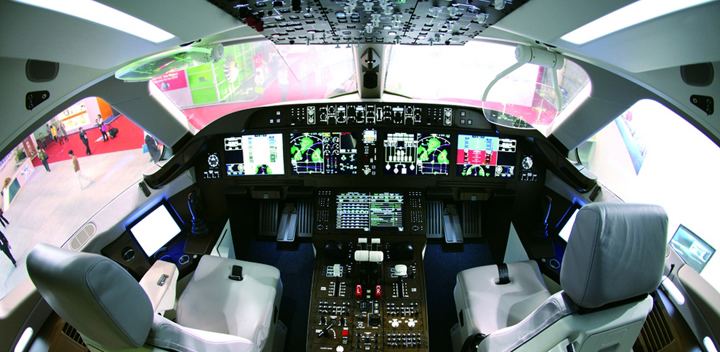
The C919 forms part of China's long-term goal to break Airbus and Boeing's duopoly, and is intended to compete against Airbus A320neo, Boeing 737 MAX, Bombardier CSeries, Irkut MC-21, and other next-generation single-aisle airliners.
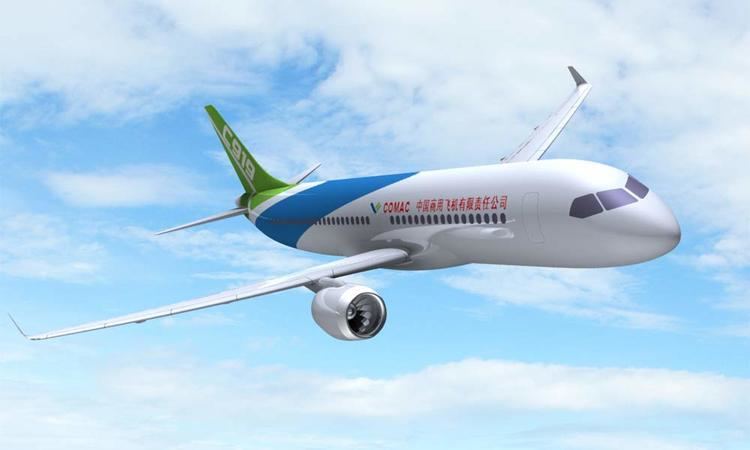
Development
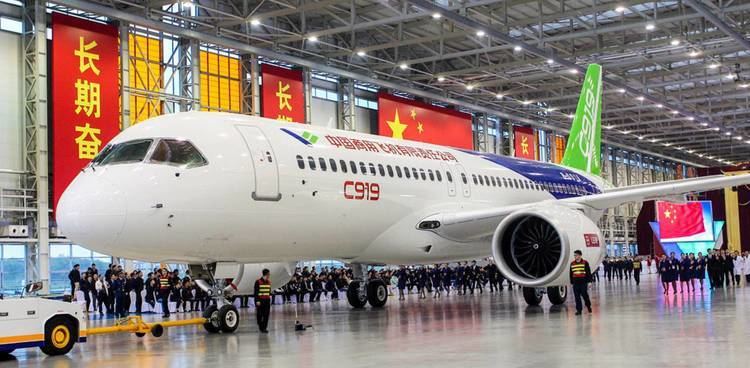
Comac applied for a type certificate for the aircraft from the Civil Aviation Authority of China on 28 October 2010. The company plans to conduct the first flight of the C919 in 2017, with deliveries beginning in 2018, whereas Marwan Lahoud, Chief Strategy & Marketing Officer of Airbus Group, assumes a competition outside China around 2020.
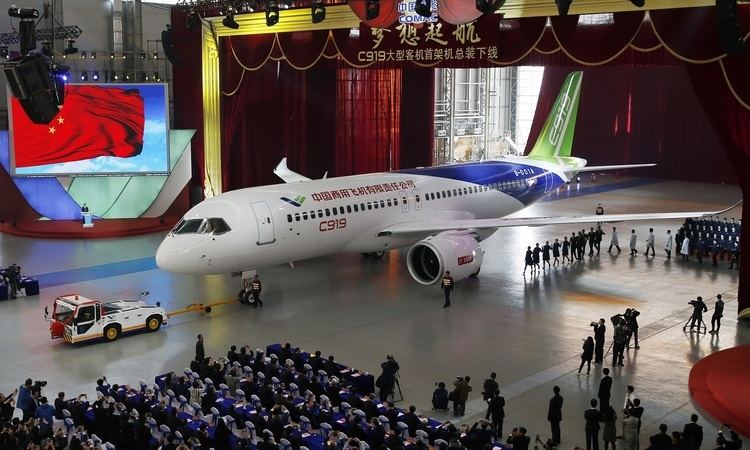
In June 2011 COMAC and Irish low-cost airline Ryanair signed an agreement to co-operate on the development of the C919 On 24 November 2011, Comac announced the completion of the joint definition phase, marking the end of the preliminary design phase for the C919. The company said it planned to cut the first metal for the aircraft in December 2011, with estimated completion of the detailed design phase in 2012.
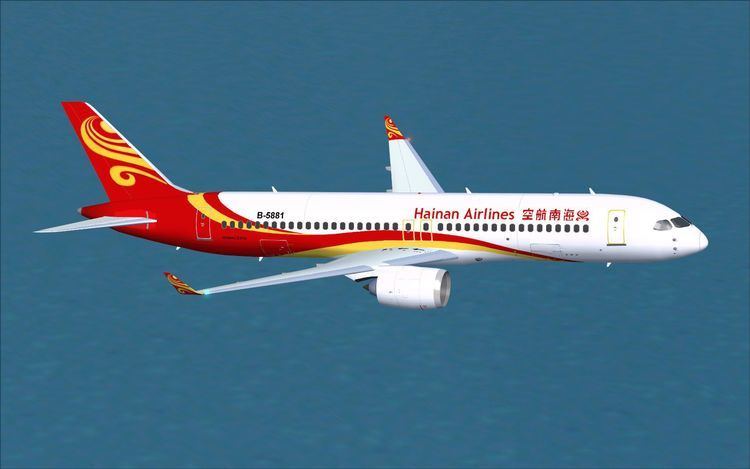
C919's advanced aerodynamics were engineered with the help of the Tianhe-2 supercomputer. With an estimated development cost of $8.3 billion, Comac planned to produce 5–10 planes per year in 2016 and 2017, subsequently ramping up to 150 C919s. The company intends to manufacture up to 2,300 aircraft of that type.
In 2014 delivery was yet again delayed by technology and supplier problems, this time to 2018. Comac rolled out its first C919 aircraft off the assembly line in September 2015 with no engines installed.
On 2 November 2015, Comac rolled out its first C919 aircraft.
Design
Design and assembly of the aircraft is done in Shanghai, using foreign-made jet engines and avionics. However, China has expressed its desire to produce a domestically made engine for the C919.
The center wing box, outer wing box, wing panels, flaps and ailerons are planned to be built in Xi'an, China. The center fuselage sections are planned to be built in Hongdu, China. The airframe will be made largely of aluminium alloy. The center wing box was originally intended to use of carbon fiber composites, but the design was changed to an aluminum design to reduce program complications.
CFM International will supply a version of the LEAP engine, the LEAP-1C, to power the aircraft. The engine's nacelle, thrust reverser and exhaust system will be provided by Nexcelle, with such features as an advanced inlet configuration, the extensive use of composites and acoustic treatment and an electrically operated thrust reverser. Michelin will supply Air X radial tyres.
Dimensions of the C919 are very similar to the Airbus A320, possibly to allow for a common pallet to be used. Its fuselage will be 3.96 metres (13 feet) wide, and 4.166 metres (13 feet, 8 inches) high, producing a cross-section of 12.915 square metres (139 square feet). The wingspan will be 33.6 metres (110 feet, 3 inches), or 35.4 metres (116 feet, 3 inches) if winglets are included.
Payload will be 20.4 metric tonnes. Its cruise speed will be Mach 0.785 and it will have a maximum altitude of 12,100 metres (39,800 feet).
There will be two variants. The standard version will have a range of 4,075 km (2,200 nmi), with the extended-range version able to fly 5,555 km (2,999 nmi).
According to a film shown by Comac at the 2010 Zhuhai Airshow, the company plans to build six different models of the aircraft: a base passenger aircraft with 168 seats, as well as stretched and shrunk passenger versions, business jet and freighter models, and a type designated only as "special".
Target
The Comac C919 is intended to be a new entrant in the commercial airliner market specifically targeted at low-cost airlines. Fuel price increases are especially damaging to the low-cost flying model, leading these airlines to renew their fleets frequently. This ensures optimal fuel performance and reliability across a single-type fleet. Direct competitor Boeing 737 MAX unit cost of US$80.6–116.6 million in 2015 means that target price for this airplane should be lower. The Airbus A320neo has a wider price range of US$75.1–125.7 million. The Comac developers have not announced a price tag for each plane, although based on industry speculation current orders for 2012 could be worth more than US$26 billion. With 380 orders secured as of 2012, this results in projected average price of about US$68 million.
Some experts believe the C919 will not be competitive either technologically or commercially when it enters service given the plane's strong dependence on foreign suppliers. In particular, the engines will likely be sourced from CFM International Inc. (LEAP-1C engine), the same company that sells the CFM International CFM56 used by direct competitors. Others also say that it will most likely not be competitive given that every single commercial airline (except for City Airways which is based in Thailand) that has placed an order for the aircraft is a Chinese airline that wants to support their country's technology. This idea is reinforced because all of the Chinese airlines that have placed orders for the C919 already have either the Boeing 737 or Airbus A320 in its fleet. In 2013, state-owned newspaper Global Times complained that an Aviation Week editorial about the bleak prospects for the aircraft "maliciously disparaged the future outlook for the C919."
Orders and deliveries
At the 2010 Zhuhai Airshow, Comac announced orders for 55 C919 aircraft from six airlines, with an additional 45 options. The purchasing airlines or lessors included China Eastern Airlines, Air China, Hainan Airlines, China Southern Airlines, CDB Leasing Company, and GE Capital Aviation Services.
On 20 October 2011, Chinese leasing company ICBC Leasing announced an order for 45 C919s, as well as an agreement to be the launch customer for the aircraft. On 11 November 2014, Comac announced at the 2014 Zhuhai Airshow that China Merchants Bank's aircraft leasing division made a firm commitment for 30 C919s, and that total orders were now up to 450 aircraft.
Production of the first C919 testing prototype began on 9 December 2011. The flight testbed was expected to enter final assembly in 2014, and perform its first flight sometime in 2015. However, as of the 2014 Zhuhai Airshow, the first flight has been delayed to 2017, with the first delivery delayed to 2018.
At the 2015 Paris Air Show, Ping An Leasing signed a letter of intent for 50 C919s. This deals makes the Shanghai-based Chinese lessor one of Comac's largest customers. In addition to Ping An Leasing, Puren Group also signed a letters of intent for seven C919s and seven ARJ21s, intended for the start-up Puren Airlines. Also during that time Nepal Airlines was interested in acquiring 2–3 to replace older aircraft. Separately, COMAC has received an order for 20 C919s (5 on firm order) from the Shanghai Pudong Development Bank Financial Leasing Co. and for 36 C919s from the CITIC Financial Leasing (18 on firm order).
